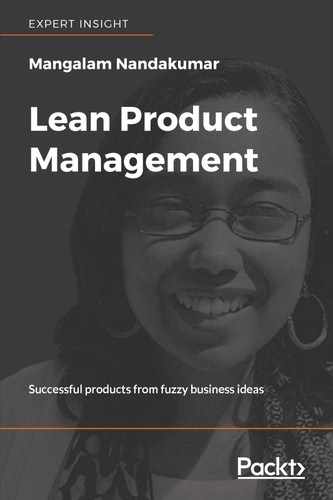In the past few chapters, we saw how to evaluate the impact of feature ideas and define our success metrics. While defining success metrics, we were able to identify the different aspects of a business that need to come together to weave a delightful end-to-end product experience. This is the first step in creating a plan of execution for a feature idea, but there are many ways in which we can create the product and deliver value. Businesses strive to create products that provide lasting value for their customers. The Impact Driven Product for a business is not just about something that works. It is about what creates the most value. Product development should be open to consider, compare, and evaluate the value of building something from scratch versus buying an existing solution versus the necessity of building anything at all.
This chapter addresses the following topics:
- Value mapping
- Defining the Impact Driven Product
- Understanding the risks and costs of implementing a feature idea
"You mustn't be afraid to dream a little bigger, darling."
Eames, Inception
When I was in school, my uncle took us for a walk. He started talking about the house he was building. My dad had also just bought a house, and I was quite excited about the prospect of living in our own place. We were one of the first few people in the family who had ventured to buy a property. My uncle paused and asked me why he and my dad were able to buy a house, while our grandparents couldn't. I didn't blink before answering, "You both make more money." My uncle laughed so hard, and said, "No, we don't. We just have better access to loans." Sure enough, home loans opened up a lifetime goal for many.
Until a couple of decades ago, taking photos for pleasure was accessible only to those who could afford a camera. The alternative was to visit a photo studio. Every family had a similar looking family picture. I even read somewhere the story of parents who had taken a photo of only their firstborn. Every other child was shown the same photo as their childhood photo! Of course, mobile phones changed all that. A century ago, knowledge was restricted to a privileged few. Schools, libraries, and now the internet have democratized education.
Disruption happens when products impact people's lives in ways that were hitherto unrealized. Often, even creators cannot foresee these impacts. Visionaries can imagine a world in a way that is not bound by today's scarcity, and the disruption is a by-product of ambitious goals. Today's technological advances, infrastructure capabilities, talent, and opportunities make it possible for more of us to dream bigger. Success or failure depends on adoption and execution.
What minimum viability attempted to inculcate was a practice of building just what was enough to satisfy early adopters. The intent was to validate the riskiest hypotheses, without running out of runway. The riskiest hypotheses could be about technology viability, market adoption, revenue generation, and the overall business model itself.
We translated minimum viability to suggest that "we have limited resources. We don't know what will work. Let's build a product that is small enough to tell us if our idea works, without burning our resources." This is not at all a bad idea and is in fact the right way to approach untested waters. However, when employing market-ready technology (where technology viability has been proven and can be applied to business use cases), this mindset about building as little as possible can be limiting. We cannot build an ambitious business with a minimum product experience. Our mindset should shift to "we have ambitious goals. We don't know what will work. Let's deliver as much value to our customers, while generating as much value for the business. We find a way to make this work or we die trying!"
We need to change our mindset and leap for success, instead of bracing against failures. This does not mean that we have to build the whole gamut of functionality. It only means that we must be smart about building the most impactful functionality, without compromising on creating a delightful product experience.
Product teams must continue to explore the best way to deliver impact. This does not mean that we need to build everything from scratch. Our value is in being able to see the big picture and set up the business, customers, and the product for success. For this, we need to write the sheet music, not be the solo pianist. Defining business outcomes and the success metrics at a high level gives us a good handle on the value of a product experience. It also gives us an idea of the riskiest hypotheses we need to validate. Now we need to establish the cost of creating that product experience.
